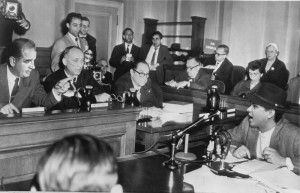So it’s official, we are going to committee on a sibling group of 2 boys. Both are younger then Jayme and live in the Portland area. The date set for the committee is March 10th 2014. If chosen we could have them home by late March to early April.
This will be our first time going to committee post Jayme and the third committee we have ever gone to. And this time around it’s not as scary. We both are feeling very confident, which we really hope is not pride before the fall.
We have started to get the house setup as the waiting period of 7 days will just not be enough time. We have ordered the beds and toddler proofed the house and stairs.
For those of you unsure what going to committee means:
(Content below reposted from www.lanecountyheartgallery.org)
The committee consists of three members who are usually DHS caseworkers, retired caseworkers, or social workers experienced in the adoption field. The committee meets for three hours, usually 9-Noon or 1-4 p.m. Occasionally it lasts longer, but not often.
Committee starts with a presentation of the child by the Case Worker (CW. Sometimes the child’s foster parent, therapist, court appointed special advocate (CASA), or attorney, is also present and invited to tell about the child as well. The CW usually brings pictures, or the child’s Life Book, so the committee can view photos. The goal is for the committee to have a thorough understanding of the child’s identity, personality, and special needs. The committee members may have questions during this time about the child based on what they hear, read, or otherwise observe.
Once the child has been presented, any representatives for the child, except the CW, are dismissed and the AWs for the families each have a turn telling the committee about the family they represent. Again, the committee members may have questions for the Adoption Worker (AW) based on what they hear or what they have read in the family’s home study.
The committee members then remark on or list the strengths they heard or read about each family and the concerns they have about each family. Then they vote. If the two junior members each vote for a different family, the chair must break the tie with a vote for one of those two families so that we leave committee with a decision. We nearly always leave committee with a decision about who will adopt the child.
When committee ends, the families receive a call informing them whether or not they were selected by the committee. The AW who represents each family takes notes throughout the committee, types them, and forwards them to the family, usually the next day. If a family lives outside Oregon, then at this point our agency will step aside and the family’s AW will work directly with the child’s CW to proceed with the placement.
The CW comes to committee prepared with the child’s files, which are given or sent to the family’s AW. There is a 7-day blackout period then to give the family an opportunity to review the files more thoroughly with physicians, psychologists, teachers, and whoever else can help the family be certain this is what it wants. During this time, the CW and AW will work with the family to make a transition plan.
